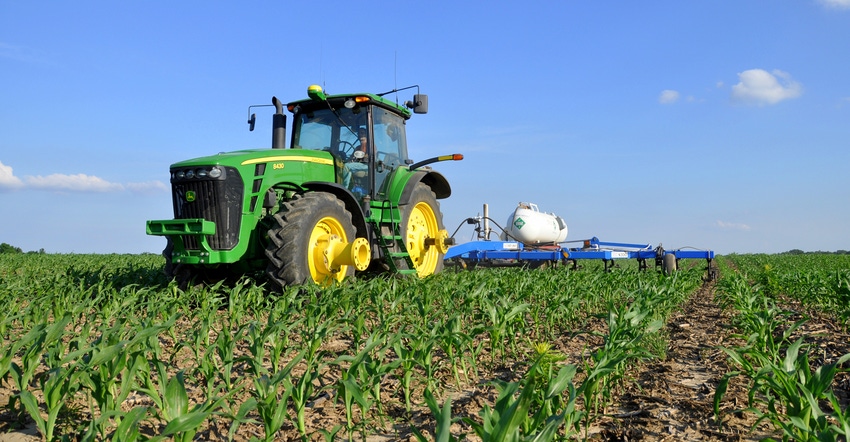
There’s no need to beat around the bush: Farmers know nitrogen prices have hit as high as $1,550 per ton. Managing this is the hard part.
Eric Wilson, Wyffels Hybrids agronomy manager, recently offered up nine ways to get the most out of the nitrogen you apply in 2022. That may mean shaking up your typical rates, applications, timings, stabilizers and more.
Even if you use the corn nitrogen calculator, you may fight a battle in your head: Reduce N rates due to high N costs, or raise N rates to produce more bushels because of high commodity prices?
How do you find the middle ground between less N use and more yield production? The key is to understand risks, Wilson says.
A typical management strategy may include a preplant application that meets 120% of N needs for a field. This provides a cushion for potential N loss, he says. But higher N costs may encourage farmers to reduce application rates to 100% of N needs, so it’s important to pay more attention to management to succeed.
Nitrogen management
To start, Wilson suggests you determine the most profitable N rate for your situation:
1. Calculate. The corn nitrogen calculator compares N price and grain price to find the final economic N rate you will want to apply for maximum return, he says. But limitations exist. The calculator works based on typical weather conditions, so it doesn’t factor in situations with above-average N loss.
Next up, understand what factors affect soil N availability:
2. Rainfall. When there’s more than 16 inches of rainfall between March 1 and June 30, you should perform an additional N application ranging from 20 to 50 pounds of N per acre.
3. Temperature. Air temperatures of 55 to 60 degrees and 65 degrees F can cause denitrification losses ranging from 2% to 5%, respectively.
Wilson says when you recognize these rules of thumb, you can use risk management tools to monitor N rate and then react accordingly:
4. Late spring soil nitrate test. Results of this test reveal current N status of your field as well as show you if additional N is needed and at what rate. Perform this test at V3 or V4 to determine what N rate you need for a sidedress application. And don’t expect one test to be the most reliable — pull multiple tests on a field to get an accurate representation. For example, with an 80-acre field, Wilson recommends pulling five samples. Typically, cost runs at $8 per sample, which is worth it when thinking about nearly $1 per pound of N.
5. N models. These models estimate the nitrogen cycle as well as other factors such as weather, application timing and environment to give a sense of nitrogen tracking throughout the growing season. You can use an N model as an indication that N in your fields may be getting low. There are different N models available — find one that makes the most sense for your operation.
Other keys to success
In the end, flexibility is key when it comes to management of high-cost N, Wilson says. “If we want to be better at N management, then we need to pay attention to it.”
So, in addition to those four factors that affect N availability in the soil, he offers up four more tactics to make the most of N.
6. Manage N appropriately. Manage N based on yield goals you want to maintain and in response to environment. Don’t manage N in response to the way a hybrid will interact.
7. Set goals early. When you establish goals for your N program, you can create plans for the growing season. And it’s easier to react with a well-laid plan in place because it forces you to think about what-if scenarios such as the need for an extra application and how you will react.
8. Be flexible. This applies to applications, rates, timing, methods and tools. This flexibility creates more avenues to a successful growing season. Long story short, get N applied when needed and in the best way possible to be successful.
9. Make more application trips. Facts: Corn uses about 25 pounds of N per acre total between germination and V6, and 7 to 11 pounds of N per acre per day from V6 to tassel. There’s more value in extra application trips, as it allows you to be more efficient in making sure N is available during utilization periods. Each pound of N lost costs you more this year than ever before, so make sure you have ample N throughout the growing season.
About the Author(s)
You May Also Like






